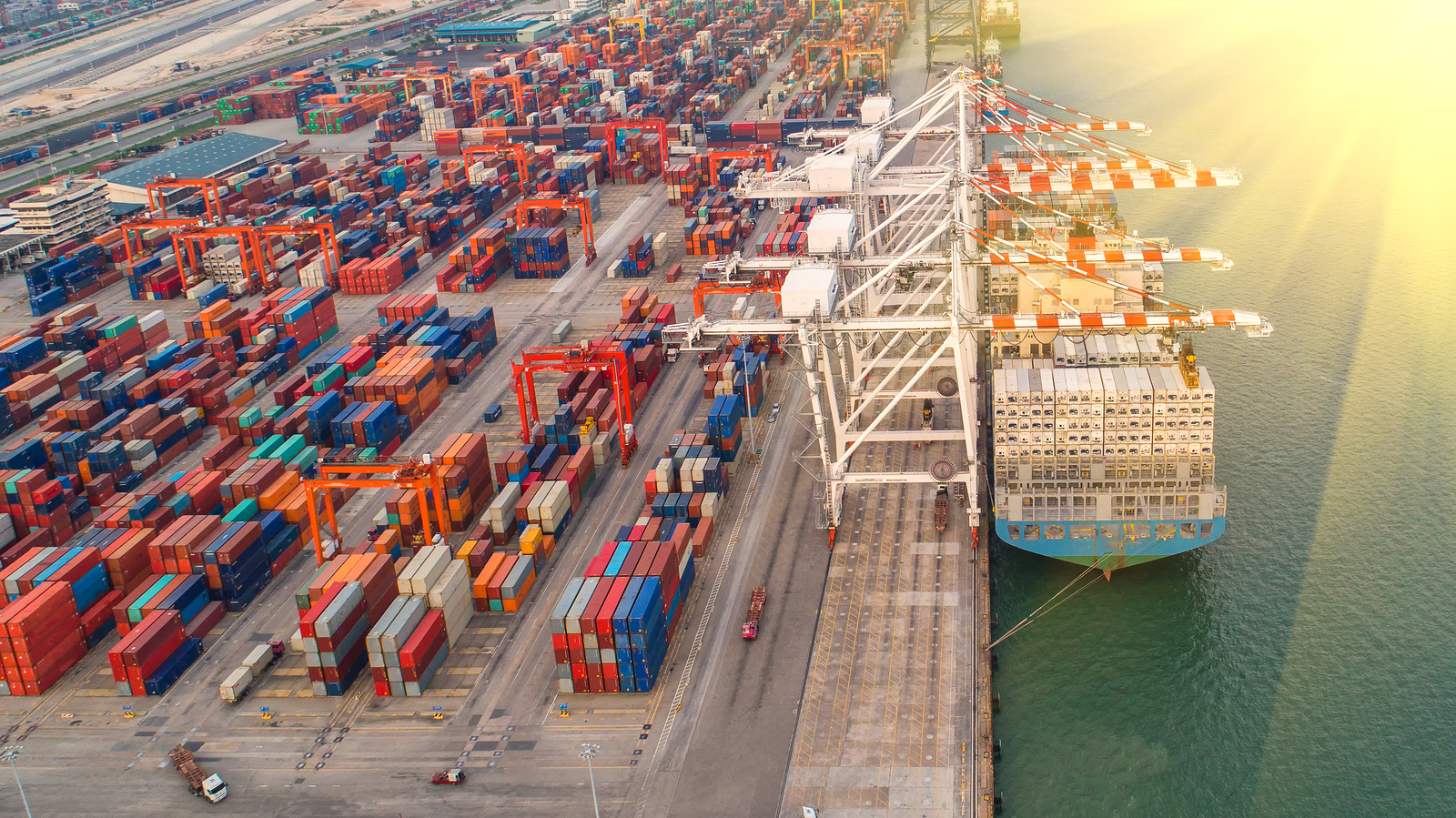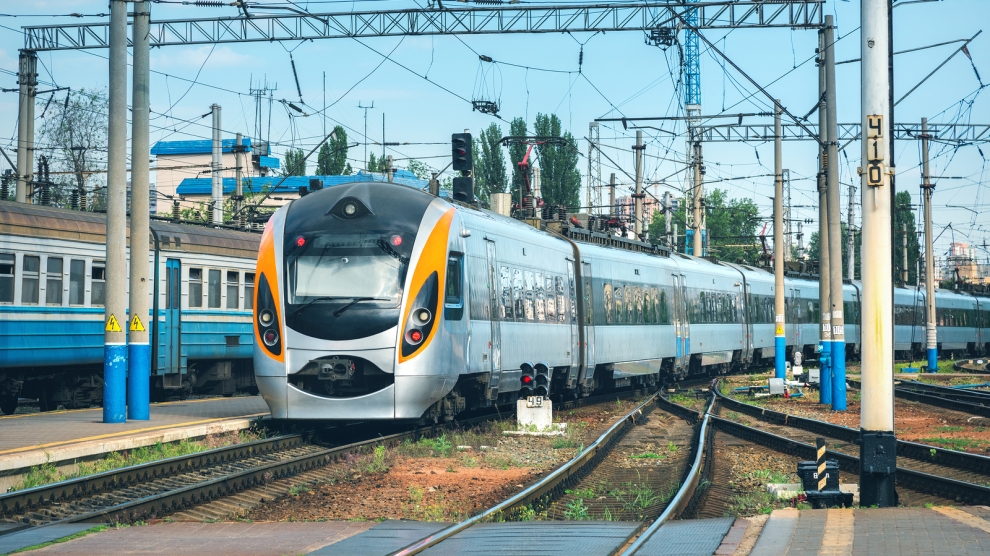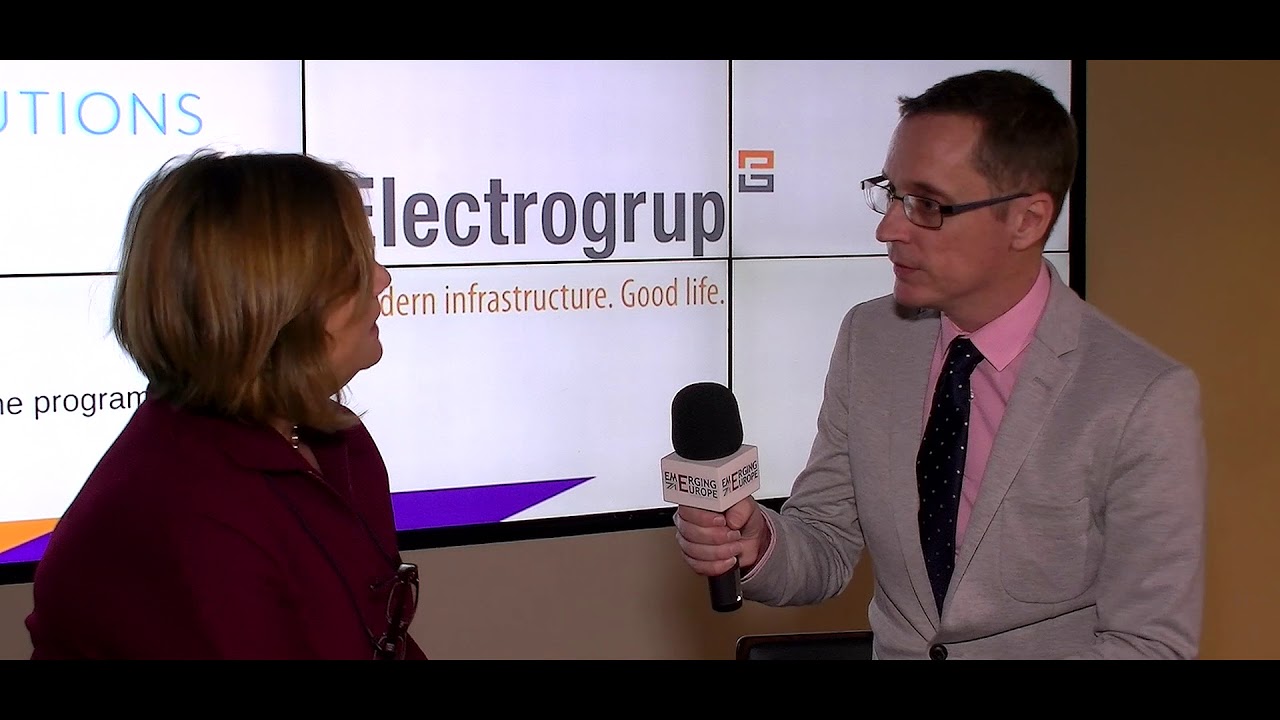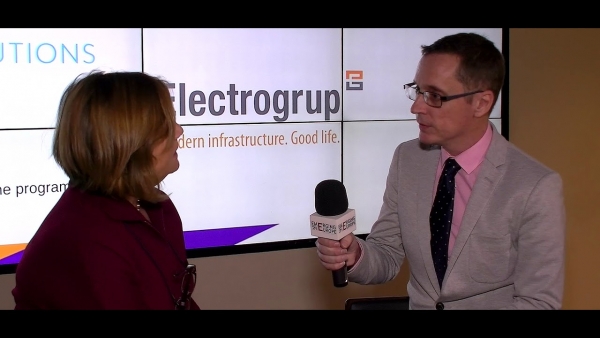In January, in a bid to boost connectivity and economic growth in emerging Europe’s Eastern Partnership (EaP) countries (Armenia, Azerbaijan, Belarus, Georgia, Moldova and Ukraine), the European Commission and the World Bank co-authored a Trans-European Transport Network (TEN-T) Investment Action Plan that identifies a number of priority projects.
Together, the projects will require estimated investment of almost 13 billion euros and foresee a total of 4,800 kilometres of road and rail, six ports, and 11 logistics centres.
European Commissioner Johannes Hahn, responsible for European neighbourhood policy and enlargement negotiations, said at the time: “The completion of the Indicative TEN-T Investment Action Plan is a joint commitment to deliver tangible results for citizens across the region. The plan will assist decision-makers in prioritising strategic investments in transport infrastructure with the aim of completing the TEN-T network defined as one of the 20 deliverables for 2020 in the Joint Declaration of the last Eastern Partnership Summit in Brussels.”
TEN-T
First launched in 1994, TEN-T has for 25 years been the European Union’s flagship infrastructure programme. Its primary objective is to close the gaps between countries’ transport networks, remove bottlenecks that impede the smooth functioning of the internal market and overcome technical barriers such as incompatible standards for rail traffic. Its specific focus is on modal integration (developing all transport modes and connections between them, as well as traffic and information management systems), interoperability and coordinated infrastructure development.
In 2013, the European Commission established a network of nine core transport corridors that links all EU member states. Plans for a second generation of TEN-T corridor works were approved in December 2016, laying the foundation for completion of the network by 2030.
In many places, that looks like a highly optimistic target.
The scale of the problem is huge. Try driving, or taking a train, from Warsaw to Bratislava. Planes remain the only viable option for most travellers. Goods have to meander slowly along what are often single carriageway routes. The same goes for goods being shipped from Sofia to Bucharest, or from Tallinn to Vilnius.
The projects included in the European Commission and World Bank’s latest investment plan were identified together with the Eastern Partnership countries with the assistance of the international financial institutions. Along with infrastructural investments, the plan aims to bring forward key reforms for the transport sector and improve road safety in the region. The development of project on the TEN-T is expected to foster regional development by improving access to economic opportunities, harnessing the benefits of industrial agglomeration and increasing market competition.
“Enhanced transport connectivity both within the Eastern Partnership region, and between the EaP region and the EU has the potential to bolster economic growth,” said European Commissioner for Transport Violeta Bulc.
Breaking down
While these are encouraging words, the track record of emerging Europe’s contribution to the TEN-T programme – even amongst those countries which are members of the European Union (the EU-11) – is modest at best.
This is especially relevant in terms of intra-regional infrastructure. For much of the past 15 years investment has been concentrated on connecting emerging Europe to the western part of the continent. The need to create viable networks linking the countries of the region with each other has been, while not entirely forgotten, far less important than facilitating east-west trade.
A number of years ago, on a trip to the Baltics, I needed to travel from Riga in Latvia to the Estonian capital of Tallinn. A seven-hour bus ride was the only real option. But what a bus it was. Luxurious seats, free coffee, WiFi – long before WiFi was standard in hotels and cafés – and admirable punctuality. I remember arriving in Tallinn and asking a colleague, an Estonian native, why the buses in the region were (although painfully slow) so comfortable. “Because the trains are crap”, came the rather blunt reply.
Despite the progress achieved since then, there is still a great need in Central and Eastern Europe countries for a more efficient and modern transport infrastructure to support the region’s growth. There are exceptions (particularly Slovenia, Hungary and the Czech Republic) but road, maritime and particularly rail infrastructure remain considerably less well-developed than most analysts expected by this stage of the region’s transition. Indeed, in some countries things appear to be moving in entirely the wrong direction.
“[Rail] routes between Serbia and Bulgaria (or Bulgaria and almost anywhere) seem to be breaking down completely,” says Mark Smith, a travel writer and author of the authoritative train travel website seat61.com.
Rail Baltica
Rail Baltica may indeed one day mean that those of us travelling from Riga to Tallinn can leave the bus behind. We should not hold our breath.
When complete, Rail Baltica – the largest infrastructure project ever carried out in the Baltics – will stretch for almost 1,000 kilometres and is expected to run from Tallinn via Pärnu in Estonia to Riga in Latvia, Kaunas in Lithuania and on to Warsaw in Poland. The line will connect Estonia, Latvia, Lithuania and Poland with a faster, interoperable, direct rail line for both freight and passengers, and offer an alternative to the predominant traffic flows with Russia and Belarus. It will encompass three multimodal freight terminals and three airport connections.
The first phase of the project (Rail Baltica I), from the Polish border to the Lithuanian city of Kaunas, was completed in October 2015. The second phase (Rail Baltica II) will complete the project, connecting Kaunas, Riga and Tallinn with an electrified doubletrack line.
“Hopefully, Rail Baltica will sort international travel out in this corridor, but the current pitiful weekends-only train between Poland and Kaunas isn’t the stunning start I’d hoped for,” Mark Smith tells Emerging Europe.
The total cost of the rail line has been estimated at more than six billion euros, with the European Union footing a maximum of 85 per cent of the bill as part of the TEN-T programme.
That still leaves a large amount of the total cost to be met by the Baltic States themselves, and in Estonia especially there is a great deal of opposition to the project. A recent poll put public opposition to the project at 40 per cent. Priit Humal, an Estonian activist, has described the enterprise as “costly and economically unfeasible.” Estonia’s share of the bill is around 300 million euros. Other opponents of the project are also concerned about its potential environmental impact, as it will traverse important forested areas and wetlands.
Nevertheless, in January, Arenijus Jackus, director of the Rail Baltica Coordination Department at Lietuvos Gelezinkeliai (Lithuanian Railways) said that all land purchases and technical designing work will be finished in 2023, with construction being carried out between 2023 and 2025.

Limiting growth
The EU has an average infrastructure rank of 5.65. No CEE country exceeds five, while the average for the region is 4.02, and some countries, such as Albania, Romania and Moldova, score as low as 3.5.
In the latest WEF Executive Opinion Survey, business leaders noted that inadequate infrastructure is a substantial barrier to business growth in CEE. It is ranked as one of the most significant barriers in all CEE countries (for example, fourth in Bulgaria, seventh in Poland and Romania).
There is little doubt that better infrastructure could help all CEE countries improve their competitiveness, including those that already score relatively high. For example, Poland ranks high in global competitiveness at 36, yet its infrastructure rank is only 53, with a score of 4.34.
Over the period from 1995-2015, there was clear progress in the trend of CEE transport infrastructure investments. They began to grow rapidly after 2001, totalling almost 210 billion over the 20 years. Thanks to these investments, the EU members in CEE managed to catch up on their infrastructure backlog from previous years. The road network, in particular, has seen substantial improvements, with more than 5,600 kilometres of new motorways built throughout CEE since 1995.
However, there is still considerable disparity in both availability and quality of road, rail, air and port infrastructure across CEE; gaps within and between the networks cause bottlenecks in the movement of both people and goods, particularly across borders.
“The shape of supply chains is evolving and changing fast. Traditional long-haul transport is reaching breaking point and it’s crucial that all parties work together to ensure the seamless flow of goods into, out of, and across Europe is maintained. Brexit and other external factors are adding pressure on logistics stakeholders to come up with long-term solutions. This is partly why we are seeing an emergence of new logistics corridors, as the EU invests in Europe-wide infrastructure and new technology to reduce costs and improve efficiency,” claims Lisa Graham, the head of EMEA logistics and industrial research and insight at Cushman & Wakefield.
Rhine-Danube
The Rhine-Danube Corridor is the transport backbone of emerging Europe, connecting the entry ports at the Black Sea with southern Germany along the Rhine and Danube. The other branch links the Ukrainian-Slovakian border to the Rhine ports and central European regions.
The corridor is the main east-west link between European countries, connecting France, Germany, Austria, the Czech Republic, Slovakia, Hungary, Croatia, Romania and Bulgaria along the Rhine, Main and Danube rivers to the Black Sea. It also touches four non-EU States: Serbia, Bosnia and Herzegovina, Moldova and Ukraine.
The corridor focuses to a great extent on rail and inland waterway interconnections. The main inland connection between the Rhine, Main and the Danube represents the backbone of inland navigation between the north-western European basins and the southeastern Black Sea.
A major step forward in developing the corridor came in January when a consortium comprising Turkish companies Alsim Alarko and Makyol was awarded a 682.8 million-US dollar contract to upgrade the Apata – Cata section of the Brasov – Simeria railway line in Romania, a key bottleneck. The European Union is providing 82 per cent of the funding for the project through the Connecting Europe Facility (CEF), with the remaining 18 per cent being funded by the Romanian government.
Five critical corridors
In all, there are five TEN-T corridors which are critical to the development of Central and Eastern Europe. Besides the North Sea-Baltic and Rhine-Danube corridors, the Baltic-Adriatic, Orient/East-Med and Mediterranean corridors play a significant role in the region’s development.
From the emerging economies of Eastern Europe to the established centres of Western European commerce, they open up significant potential for sustainable economic growth, which means opportunities throughout old and new EU member states and the development of trade and business relationships with Asian countries and globally.
The Baltic-Adriatic Corridor is one of the most important trans-European road and railway axes, connecting the Baltic ports in Poland with the Adriatic Sea. The corridor links the major intersections (urban nodes, ports, airports and other transport terminals) through rail, road, maritime and air transport connections from north to south, for example from Poland through the Czech Republic, Slovakia and Austria, to Slovenia and Italy. It includes priority railway projects, such as new cross-border sections and the Gdansk-Ravenna rail freight project. At 2,400 kilometres and carrying more than 24 million tonnes of freight a year, this initiative provides better access to both Baltic and Adriatic seaports for economic centres across CEE. Such a network significantly strengthens the efficiency, safety and quality of the infrastructure base through multimodal transport chains for freight and passengers.
The North Sea – Baltic Corridor is the northernmost corridor in TEN-T. Not only does it play a critical role in creating improved connections between Central, Northern and Eastern Europe; it also links some of the most important ports in Europe. This corridor is therefore crucial for the region’s integration into global transport routes. The Baltic States serve as a vital commercial hub for connections to the eastern and northern markets of Russia, China and the rest of Asia, while the North Sea ports provide maritime access to global trading routes, including to the Americas.
Increasing capacities and bridging missing links in the rail network – given a fragmented and outdated rail network along the corridor, rail projects account for the highest share of planned investments.
The Orient/East-Med Corridor connects the maritime interfaces of the North, Baltic, Black and Mediterranean Seas. It links the German ports of Bremen, Hamburg and Rostock to the Czech Republic and Slovakia, with a branch through Austria, extending further through Hungary and Romania towards Sofia, with links to the port of Burgas and to Turkey, then to the Greek ports with a ‘Motorway of the Sea’ link from Greece to Cyprus.
Meantime, the Mediterranean Corridor links the ports in the south-western Mediterranean region to the centre of the EU, following the coastlines of Spain and France, and crossing the Alps towards the east. Only the easternmost part of the Corridor crosses the emerging Europe region, but through a crucial area: Slovenia, Croatia and Hungary up to the Ukrainian border. It will facilitate connections with non-EU countries, in particular the Western Balkan countries and Ukraine.

Belt and Road Initiative
In December 2018, a truck carrying goods travelled from the Chinese border town of Khorgos, through Kazakhstan, Russia and Belarus to Poland in just 13 days. It is hoped that the new route will contribute to the success of China’s Belt and Road Initiative.
“This first TIR journey by road from China to Europe is a win-win-win model for business, trade and governments. It will be a game changer for cross border transportation in China,” said Umberto de Pretto, the general secretary of the International Road Transportation Union. “This trial demonstrated that the system is secure and highly competitive in terms of cost and time relative to other modes of transport on similar routes. It will boost trade between China and Europe, which will help China and the countries along the Belt and Road route reap the economic and development rewards of international road transport.”
The Belt and Road (BRI) is a development programme to promote Eurasian trade and integration which China hopes will have an impact not just on CEE and the rest of Europe, but on the entire world. Its two main components are the land-based Silk Road Economic Belt, and the Maritime Silk Road, which will create a vast infrastructure network connecting China to Europe via South and Central Asia and the Middle East. The routes will run through more than 60 countries, which today represent 65 per cent of the world’s population, 30 per cent of global GDP and more than 35 per cent of the world’s trade.
Flagship Chinese-backed infrastructure projects in CEE currently include a bridge to unite Croatia, a high-speed railway connecting Hungary and Serbia and a motorway in Montenegro. However, the Budapest and Belgrade rail link – which will cost teo billion euros – has twice been rejected by the European Commission on the grounds that the tender process was not transparent and violated EU rules.
The arrest in January of a now former Huawei employee on espionage charges in Poland has also focused minds on the wisdom of accepting Chinese funding.
“China’s money offers both opportunities and dangers in the region,” Christopher Hartwell, a fellow at CASE , the Centre for Social and Economic Research, tells Emerging Europe.
“In the first instance, any flows of investment are welcomed and can help countries struggling with tapping international capital markets or those with small populations to really see some impressive infrastructure needs fulfilled. On the other hand, the involvement of the Chinese government in the whole venture means that much of this money is coming with strings attached, and it’s doubtful that leaders in the CEE region are willing to cede political concessions for a roadway or utilities. So we’ll need to see how it plays itself out. The real interesting question I think is, does China displace Russia as the perceived guarantor of some countries of the region (for example Serbia)? Time will tell.”
Amat Adarov, an economist at the Vienna Institute for International Economic Studies (wiiw), is also sceptical about Chinese financing.
“Besides the benefits Chinese BRI will bring to CEE countries in the form of better cross-border connectivity, trade and employment prospects, indeed, there are a number of risks attached,” he tells Emerging Europe.
“Greater integration intensifies mutual impacts and exposures, and BRI will lead to higher economic and political dependence on China; there are some concerns that it may also dilute the guiding role of the core EU values in some countries, depending on their specific political contexts. Of great concern in the EU is also the related issue of China’s improved access to strategic infrastructure and sensitive technologies in Europe as a result of BRI, which is a matter of national strategic and security considerations, also reflected in the recent Huawei scandal in Poland. Secondly, large-scale BRI projects, mostly financed via loans, may jeopardise debt sustainability in some countries with already high debt levels. Third, a lack of transparency and compliance with EU regulations, particularly, regarding proper public procurement procedures and technical standards. Finally, there is a risk that active engagement of China in Europe may trigger adverse protectionist policy responses in the EU.”
What is clear is that CEE needs further investments to reach the EU15’s level of competitiveness. After decades of under-investment, ploughing money into new routes and modernising and maintaining the existing transport system across the region remains crucial for achieving sustainable economic growth and maximising the region’s competitive potential. Commercially attractive, revenue-generating projects, with a sound financial rationale will be key.











Add Comment